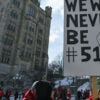On Monday, two federal court judges issued nationwide injunctions stopping the Biden administration from illegally canceling hundreds of billions of dollars in student debt. This scheme, the Saving on a Valuable Education, or SAVE, Plan, is the latest lawless loan redistribution attempt to fail in court.
Background
President Joe Biden finalized SAVE via an administrative regulation less than two weeks after the Supreme Court struck down his initial attempt at mass student loan cancellation through the HEROES Act. There, Biden had unlawfully attempted to cancel up to $10,000 each for borrowers earning less than $125,000 annually, or up to $20,000 if they had ever received a Pell Grant, a federal need-based aid grant, while in college.
The Daily Signal depends on the support of readers like you. Donate now
SAVE re-imagined the Department of Education’s income-based repayment plans. Under these plans, borrowers would see their monthly loan payment cut in half, from 10% to 5% of their discretionary income. The program also increased the threshold for income that is exempt from the calculation from 150% to 225% of the poverty line. In addition, borrowers could qualify for loan cancellation in as little as 10 years instead of 20 or more, depending on their loan amounts. The plan also waived accrued unpaid interest.
Under the new SAVE Plan, only 22% of undergraduate borrowers were expected to repay their loans, and it was estimated to cost American taxpayers $475 billion over 10 years.
What Exactly Got Struck Down by the Courts?
The Eastern District of Missouri judge’s order blocked the administration from handing out any additional debt cancellation under SAVE, which means that the administration will no longer be able to accelerate to 10 years its debt cancellation for borrowers with $12,000 or less in loans. Nor can Biden cancel the remaining balance of a borrower’s loan after 20 years of repayment under this reading of the authorizing statute. The debt remains collectible.
The District of Kansas judge’s order prevented the department from implementing another aspect of SAVE: reducing the monthly loan payment from 10% to 5% of a borrower’s discretionary income, which was scheduled to take effect on July 1. The judge’s order also blocked a provision that would have prevented the department from automatically designating borrowers as in default.
Both federal judges found that the department lacked the authority to make significant changes to the income-based repayment plan without explicit authorization from Congress. The Major Questions Doctrine, which helps judges see when an agency has gone far beyond its authority to make major rules without authorization from Congress, played a significant role in both decisions. This doctrine is also what helped stop Biden’s earlier plan at the Supreme Court.
What Remains?
Neither judge’s orders reversed the $5.5 billion already canceled under SAVE, which had been canceled due to the Biden administration implementing some of the SAVE provisions ahead of schedule.
The injunctions also did not affect other provisions of SAVE, such as increasing the income exemption threshold from 150% to 225% of the federal poverty line, excluding spousal income for married borrowers who file taxes separately, or limiting interest accrual. As a result, more than 4 million borrowers will still pay $0 under the SAVE plan while legal action is ongoing.
What Happens Next?
The Biden administration will likely appeal the injunctions, since debt cancellation has been a campaign promise. The future of the SAVE Plan will likely be determined in further court battles and could end up in the Supreme Court. In the meantime, the department is barred from canceling the balances for any additional borrowers under SAVE, a result that should be broadly welcomed by American taxpayers.
Biden should remember that none of his efforts at debt cancellation have offered a systemic answer for the rising cost of college. Instead, subsidizing loans and tuition only encourages more debt and higher tuition.
Moreover, shifting the debt burden from those who willingly took out loans to attend college onto 100 million taxpayers—including the two-thirds of Americans who have not chosen to pursue higher education—is bad policy and bad economics.






























